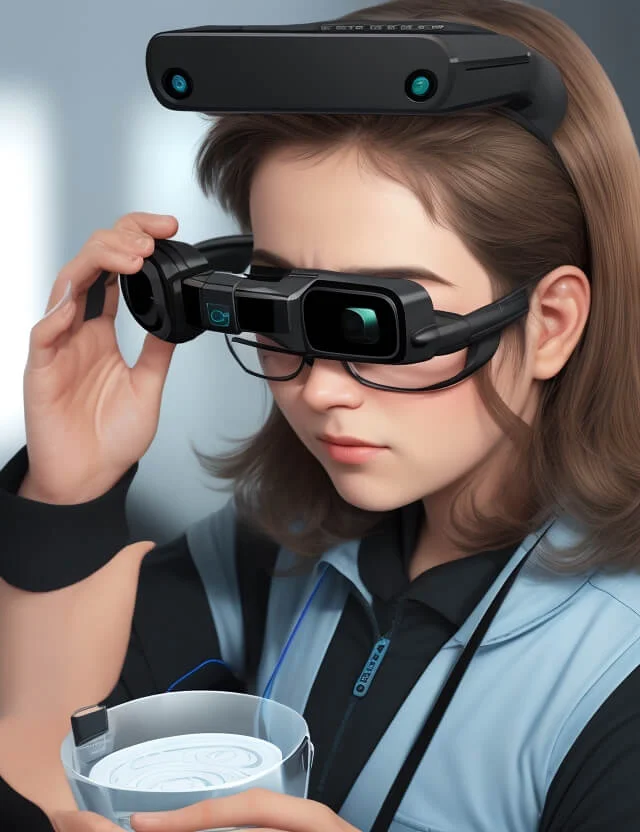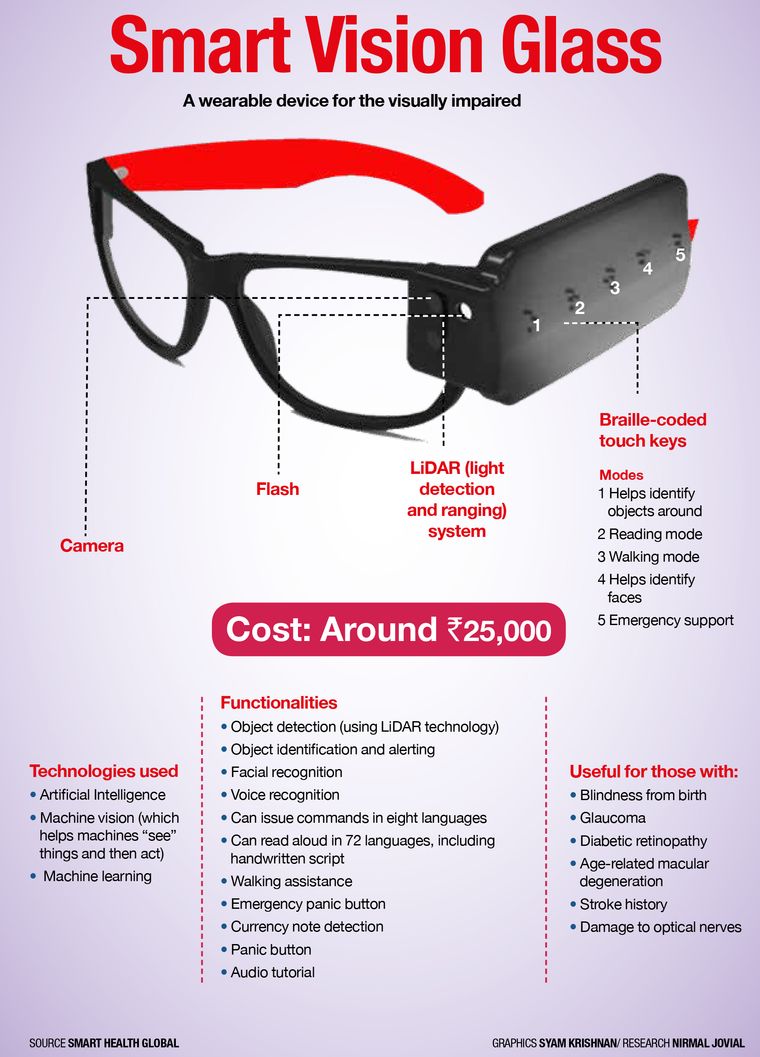The Future of Assistive Technology for the Blind: Empowering Independence
The Future of Assistive Technology for the Blind: Empowering Independence
Blog Article
Enhancing Ease Of Access Via Assistive Modern Technology for the Blind
The integration of assistive innovation for the blind represents an essential advancement in accessibility, fundamentally modifying just how individuals navigate their settings and involve with culture. As we check out the varied kinds of assistive tools and their substantial impacts on day-to-day living, it becomes necessary to take a look at just how ongoing technological innovations are improving the landscape of support for the blind area.
Summary of Assistive Technology
Assistive modern technology describes a series of devices and software application developed to boost the capacities of individuals with handicaps, consisting of those that are visually damaged or blind. This modern technology plays a critical function in promoting independence and improving the lifestyle for customers. By supplying alternate methods for accessing info and executing everyday tasks, assistive innovation equips people to browse their settings much more successfully.
The development and execution of assistive modern technology welcome a range of principles focused on fostering availability. These concepts include user-centered layout, which prioritizes the needs and preferences of the person, and the combination of technology right into everyday activities. Such advancements make certain that assistive tools are not just practical but likewise intuitive and easy to use.
In addition, assistive modern technology includes a varied spectrum of services, from low-tech alternatives like magnifiers to sophisticated innovations such as screen viewers and Braille displays. The continuous evolution of this area is driven by the demand to deal with the distinct challenges dealt with by people with visual impairments (Wearable technology for low vision). As modern technology proceeds to advancement, the capacity for improving availability and advertising inclusivity remains appealing, eventually adding to a more fair culture

Kinds Of Assistive Devices
Countless sorts of assistive tools are readily available to support people that are visually impaired or blind, each developed to attend to certain needs and difficulties. These tools can be extensively categorized right into three major kinds: low-tech, mid-tech, and high-tech remedies.
Low-tech devices consist of items such as magnifiers, Braille labels, and tactile maps. These are reasonably simple tools that boost the customer's capability to interact with their environment without requiring complex modern technology.
Mid-tech gadgets commonly entail advanced features, such as digital magnifiers and portable Braille note-takers. These gadgets can supply functionalities like speech outcome, allowing individuals to access details more effectively.

Effect On Daily Living
The schedule of numerous assistive tools considerably enhances the lifestyle for people who are visually damaged or blind, influencing their day-to-day living in profound ways. By integrating technologies such as screen viewers, Braille presents, and audio description services into their regimens, users gain greater autonomy and independence. These tools assist in accessibility to information, making it possible for people to perform daily tasks, such as checking out e-mails, navigating public rooms, and enjoying media material.
Furthermore, assistive devices encourage people to engage even more totally in social interactions and neighborhood tasks. The capacity to utilize smartphones equipped with read this accessibility features permits for smooth communication and link with others. This connectivity promotes a feeling of belonging and minimizes feelings of seclusion.
In expert setups, assistive technology sustains efficiency by permitting people to complete work tasks efficiently. Tools like voice acknowledgment software application and specialized magnification tools allow customers to participate in the workforce on equivalent ground with their sighted peers.

Developments in Technology
Current technological developments have considerably transformed the landscape of tools available for individuals who are aesthetically impaired or blind. The combination of man-made intelligence (AI) and machine learning has generated applications that boost navigating and item recognition. As an example, mobile phone apps can now use AI to identify and explain surroundings in real-time, giving individuals with useful contextual info.
Additionally, advancements in haptic innovation have actually caused the growth of clever walking sticks equipped with sensors that spot obstacles and offer tactile responses. This empowers individuals to navigate their environment with raised self-confidence and freedom. Innovations in text-to-speech software program and braille displays have boosted the access of electronic content, permitting for smooth interaction with different media.
Wearable technologies, such as smart glasses, are additionally making strides in helping aesthetic impairment. These tools can offer enhanced truth experiences, superimposing vital information schooling to be an optometrist onto the user's field of vision. Collectively, these improvements not only boost the lifestyle for individuals who are blind however also promote greater addition in society. As modern technology remains to progress, the possibility for much more transformative tools stays coming up.
Future Trends and Innovations
As technology rapidly progresses, the future of assistive tools for people that are blind holds immense guarantee. Innovations in expert system (AI) and artificial intelligence are poised to revolutionize the means blind individuals engage with their atmospheres. For example, AI-driven applications are being developed to improve object recognition, enabling users to recognize and browse their environments with greater ease and precision.
Furthermore, improvements in haptic comments innovation are enabling the development of tactile maps and navigating aids that give real-time information through touch. These technologies not only improve flexibility however likewise foster self-reliance. Additionally, wearable gadgets furnished with increased fact (AR) features are emerging, offering users visual details with audio descriptions, therefore connecting the void in between the electronic and physical globes.
In addition, the integration of wise home technology provides new chances for accessibility, permitting people to regulate their living environments via voice commands or mobile phone applications. As collaboration in between technology developers and the blind area proceeds, the emphasis on user-centered style will guarantee that future innovations are tailored to meet the special needs of this population (Wearable technology for low vision). The trajectory of assistive modern technology assures a much more empowering and inclusive future for individuals who are blind
Verdict
In final thought, assistive innovation plays an important role in enhancing ease of access for individuals with visual disabilities. The diverse range of tools, consisting of display readers and clever walking sticks, significantly improves everyday living and fosters freedom. Continuous developments in technology and user-centered design ensure that these devices cater successfully to the distinct demands of the blind neighborhood. As innovations progression, raised inclusivity and empowerment can be expected, inevitably improving the quality of life for those influenced by visual impairments.
The integration of assistive innovation for the blind stands for a crucial innovation in accessibility, fundamentally changing just how individuals navigate their atmospheres and involve with culture.Assistive modern technology refers to a range of devices and software application designed to enhance the capabilities of people with specials needs, consisting of those that are blind or visually impaired. Wearable technology for low vision.As modern technology swiftly progresses, the future of assistive devices for people that are blind holds enormous assurance. The trajectory of assistive innovation promises a more empowering why become an optometrist and comprehensive future for people who are blind
In conclusion, assistive technology plays a crucial duty in enhancing ease of access for people with visual impairments.
Report this page